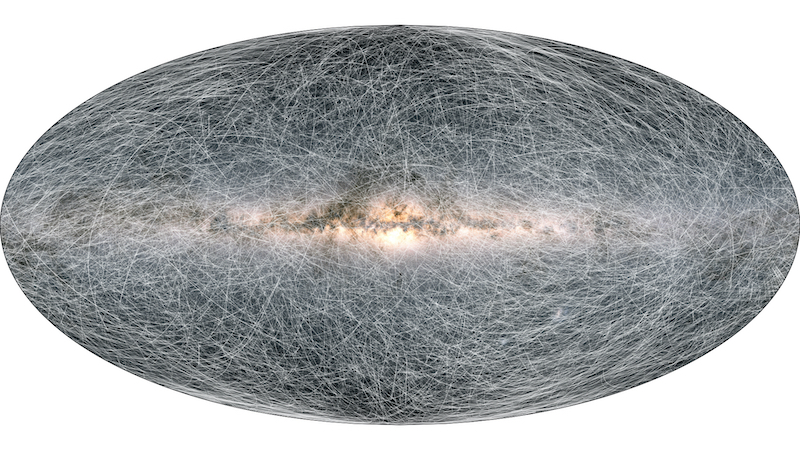In many ways, the future is unpredictable.
But there are ways to predict the future's path. One of those is the motion of stars in the universe. Gravity is a constant force and the motion of objects in orbit are very consistent—it's why we can predict when something like Halley's Comet will return even though its orbit lasts 75 years.
Now the scientists at the European Space Agency (ESA) have taken this skill to an extreme level. They've released a time lapse that shows the motions of the 40,000 nearest stars in the Milky Way Galaxy over the next 400,000 years! (And then even further than that!)
Deep look into the future
The image at the top of the post shows this 400,000-year deep dive. It may look like a bunch of scribbles, but it's much more precise. Each streak shows the distance traveled by a single star over 400,000 years.
Some of the streaks are long—these will probably stand out to you first. These stars are travelling quickly across the sky. But there are also smaller streaks. These are the slower stars. The more you look at it, the more paths you find.
What does it mean?
The Milky Way and its stars seem still to us. But they are always moving. (Getty Embed)
This ESA simulation is still just a guess. There is no way of knowing for certain that every single one of these paths will happen exactly as predicted.
This Milky Way animation just demonstrates how much motion there actually is in the universe. To us, the stars appear fixed in the sky—so permanent that we (and many animals, too) can navigate by them. But that is only because we've known them for a mere few thousand years—a tiny fraction of their billion-year lifetimes. But over hundreds of thousands of years, the movement of stars is truly incredible. Bottom line? Everything is in motion. Always.
Check out the ESA's video below. It shows the motion of 40,000 stars over the next 1.6 million years! Get ready to time travel!
 This image shows the paths of each of the 40,000 stars over the next 400,000 years. (ESA)
This image shows the paths of each of the 40,000 stars over the next 400,000 years. (ESA)










cool